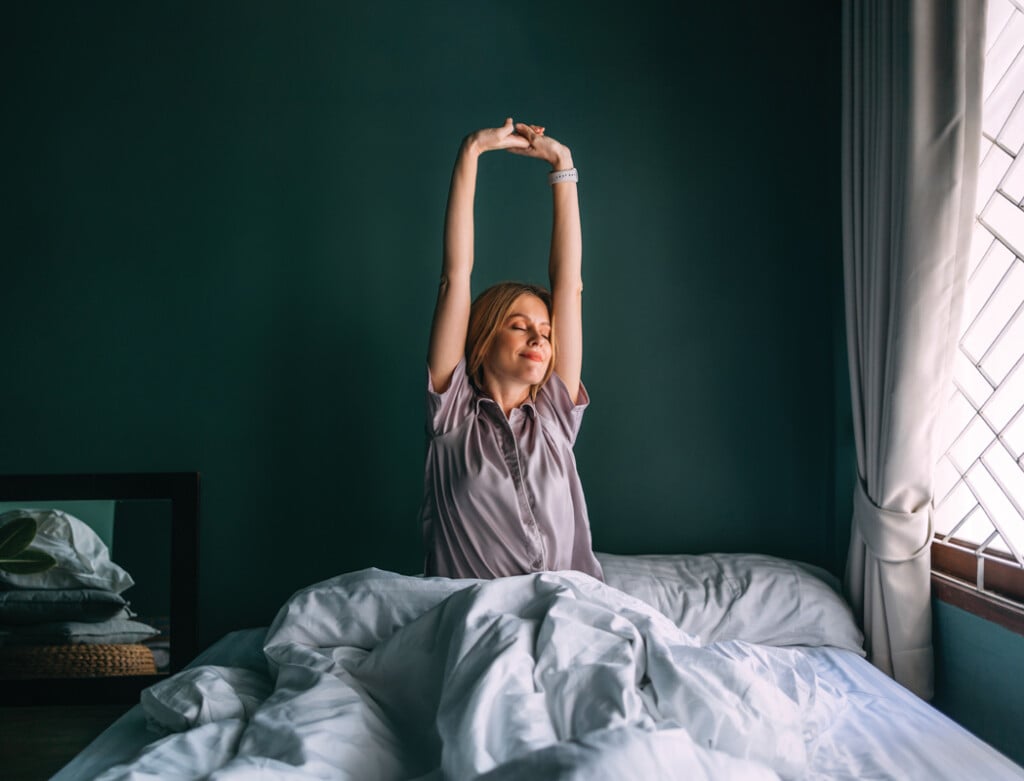The Sweet Spot for Sleep
A guide to catching some z’s

We’ve all woken up on the wrong side of the bed. As the idiom suggests, this can put a person in an irritable mood for the day. To some, this may be a random occurrence, but for others, this can happen all too often.
The value of sleep is not a new sensation. For years, scientists, doctors, and even our parents have emphasized the importance of shut-eye for growth, immunity, cognitive function, stress reduction, and countless other benefits. Yet, many of us still sleep poorly.
Money may not be able to buy everything, but it can purchase you better sleep. If you’re tossing and turning even on nights when your stress levels aren’t high, it’s likely time for a mattress upgrade.
“Sleeping on the wrong mattress can cause aches, pain, restlessness, and poor quality of sleep,” says Katie Kahn, general manager of King’s Furniture & Mattress Co. Inc. in Destin.
We live in a world where online shopping reigns, but when it comes to mattress shopping, it’s critical you give them a rest test in person.
“Comfort is subjective, and if you get the recommended eight hours of sleep a night, that means you spend a third of your time in bed,” says Kahn. “We encourage you to lie down and feel the difference.”
Where plush may sound luxuriant, it could end up being too cloud-like, which in turn provides no support and could leave you in pain. On the opposite end, too firm of a mattress may make for a miserable night’s sleep.
“When you come in and test a bed, your body will tell you what’s working,” says Mike Munroe, owner of Mays-Munroe & The Sleep Center in Tallahassee. “The two most important things you must feel from a mattress are comfort and support.”
Munroe claims this is why they sell mostly medium hybrid mattresses that merge plush and firm with coil and memory foam. This is an especially preferred option for couples who seek consensus.
Mays-Munroe takes sleep seriously, creating an atmosphere of peace and relaxation in their sleep center to transport you to the right mindset with dimmed lights, pillow protectors, soft music, and lavender diffused through the air.
When assessing the right mattress for you, you’ll be asked questions such as the age of your mattress, what issues you believe contribute to your poor sleep, how you feel when you go to bed, how you feel when you wake up, what position you sleep in, and if you sleep hot, among others.
Munroe states that it takes at least 15 minutes for the mattress to adjust and conform to you. He will leave customers during that time but watch for relaxed postures and behavior such as stillness, steadied breathing, and feet splaying to the sides.
“Your body always tells you what’s working,” says Munroe. “We don’t take making a mattress decision lightly, as it’s a purchase that impacts your quality of life.”
The position you prefer to sleep in is a decision-making factor. Stomach sleepers fare best on a firm mattress. Back sleepers need a mattress that fills in the hollow of the lower back. For side sleepers, alignment is important as no one part of your body should be sinking in further than another.
Munroe and Kahn see many couples who sleep differently. Fortunately, technology has come a long way. Instead of a box spring, for example, consider an adjustable base. Should a partner be kept up at night by snoring, they can raise the head of the bed to stop it.

There are mattresses and bases with apps that track your sleep and can play music or white noise. Shown here: Tempurpedic LuxeBreeze Soft Split King on a Temper-Ergo Smart Base. Courtesy of Mays-Munroe
Cooling technology present in mattresses can cool down the overheated sleeper while remaining comfortable to their partner. If you find you’re often woken by the movements of your partner, it’s worth checking out a mattress system that lessens motion transfer.
There are even mattresses and bases with apps that track your sleep and can play music or white noise.
The quickest way to stop counting sheep and start gaining sleep is to invest in the surface you sleep on.
10 Tips for Better Sleep
1. Keep a consistent sleep schedule.
2. Avoid screens at least 30 minutes before bed.
3. Avoid caffeine at least six hours before bed.
4. Keep your room cool, dark, and quiet.
5. Try blue-light glasses.
6. Relax before bed by stretching, taking a bath, or reading.
7. Avoid heavy meals or fatty foods before bed.
8. Limit daytime naps to an hour.
9. Keep your phone away from your bed.
10. Make the bedroom a space for rest.

